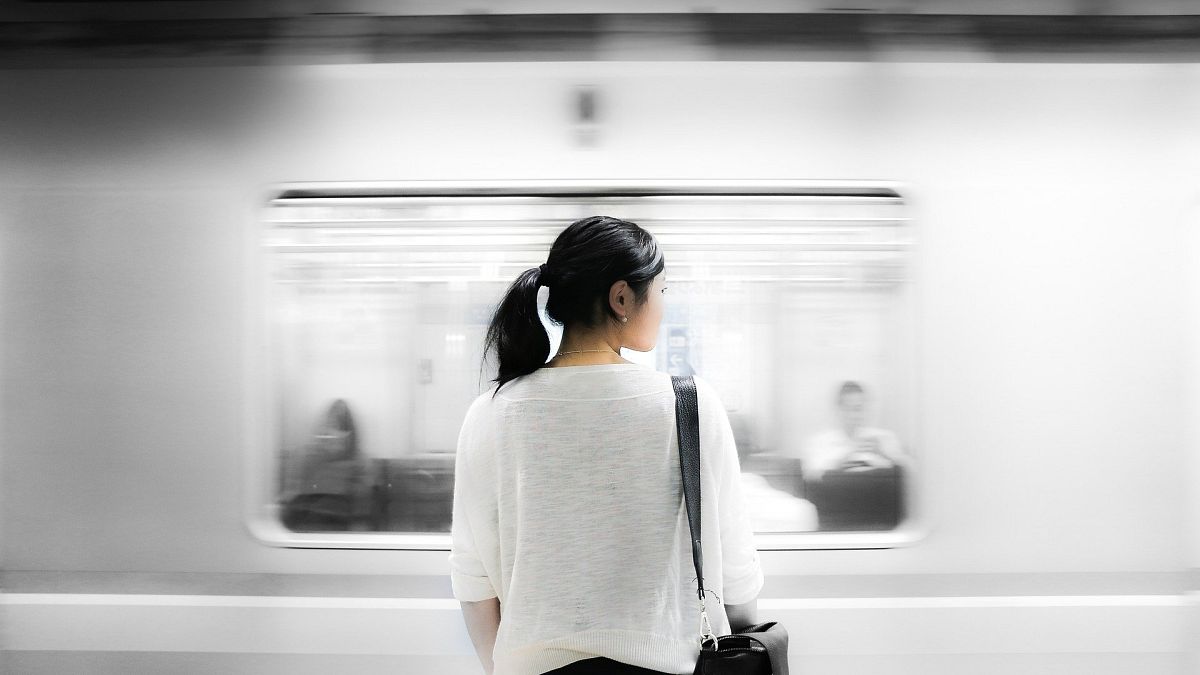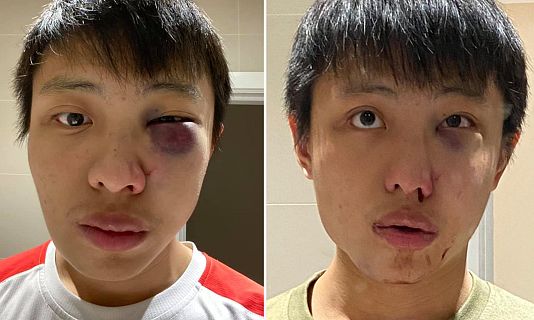The rules are simple: Wash your hands and don't point the finger.
The outbreak of the coronavirus COVID-19 has had many side effects. While the World Health Organisation and other agencies are trying to transparently distribute accurate information about the disease, the global conversation has been dominated by mass hysteria and global panic.
To protect themselves, people are washing their hands like it is the latest fashion trend and have collected stockpiles of hand sanitiser. Conspiracy theories are going viral on the internet. Protective facemasks are flying off the shelves in pharmacies worldwide.
Financial markets are crashing and Corona beer sales have declined. The travel industry is devastated, and some news media outlets have succumbed to fearmongering and blatantly misleading headlines.
But one of the most devastating side effects has been xenophobic attacks against people of Asian descent.
Xenophobic attacks and actions
Since COVID-19 originated in Wuhan, China, some people have started calling it the “China-virus.” This label along with racist assumptions centred around Chinese people’s supposed appetite for bat labelled as something that people “don’t eat in the normal world,” have caused a spate of racist attacks globally.
There has been similar disgust for the market the virus is supposed to have originated from even though scientists say it might not be that after all.
Clearly, the virus does not respect Chinese borders and new centres of infections have developed in Iran and Italy.
Nevertheless, it is mainly people of Asian descent who are on the receiving end of aggression.
The attacks can take the form of microaggressions, such as people refusing to sit next to passengers of Asian descent on metros and buses or moving up their scarves to cover their faces.
On social media, there are several reports of verbal attacks, such as in this case in Italy, where a Japanese opera singer was, according to her account, "evaded in Milan, made terrible gestures on the train, and directly ranted at."
In Germany, Sinophobic attacks have also increased.
In one of the most recent cases a Singaporean student was attacked in London. Jonathan Mok had posted pictures of his bruised face on Facebook with an account of his assault.
Mok said one of the people tried to kick him in the head and told him: “I don’t want your coronavirus in my country.”
The student was beaten so badly that doctors advised that he may have to go through reconstructive surgery for his face. Police are now looking for the attackers with the help of CCTV footage.
In some places across Thailand, South Korea, Vietnam and Italy signs have been put up forbidding Chinese people from entering restaurants and shops.
In the US, the University of California, Berkeley, published an Instagram post, listing xenophobia as a common reaction to the outbreak.
The post immediately caused a strong backlash, was quickly taken down, and the university apologised for it.
On social media, many users were quick to point out that such reactions would not have been the case if the virus had originated in Europe.
Indeed, xenophobia against Americans was not one of the reactions when the N1H1 virus was first detected in the USA in 2009.
Health institutions try to educate
To combat the stigma and xenophobia surrounding the COVID-19 outbreak, health institutions have put out statements.
During a press conference on March 2, Director-General of the World Health Organization (WHO) Tedros Adhanom said: “It’s so painful to see the level of stigma we’re observing.”
In his speech, he called for people to “fight in unison,” adding that the stigma “to be honest, is more dangerous than the virus itself. [...] Stigma is the most dangerous enemy.”
Both, the WHO and the Centers for Disease Control (CDC) have put out information pamphlets that aim to fight the stigma against people of Asian descent.
The CDC website states that “diseases can make anyone sick regardless of their race or ethnicity.” It adds that “people of Asian descent, [...] are not more likely to get COVID-19.”
The WHO writes that “stigmatisation could contribute to more severe health problems, ongoing transmission, and difficulties controlling infectious diseases during an epidemic.”
The organisation points out that stigma can:
- Drive people to hide the illness to avoid discrimination
- Prevent people from seeking health care immediately
- Discourage people from adopting healthy behaviours
They advise people to spread the facts to counter misinformation and amplify voices of those who have had and recovered from COVID-19.
Moreover, media organisations are called upon to offer balanced reporting and portray different ethnic groups, instead of only showing pictures of Chinatowns and Asian people with facemasks.
On March 4, the Instagram account Diet Prada called out the New York Times, which had posted an article about the first case of COVID-19 in New York State.
The woman had likely become infected on a trip to Iran. Yet, the paper had used a picture of Chinatown and Asian people with face masks for its article. The picture was quickly swapped out with a generic picture of New York traffic without comment.
Euronews has reached out to the New York Times for comment.
#ImNotaVirus, #JeNeSuisPasUnVirus #nosoyunvirus
Despite the seriousness of the attacks, many people of Asian descent have chosen to make the best of their situation by taking a humorous approach.
American actor, director and producer Michael Tow published a video making fun of people’s reaction when they are close to a coughing Asian.
Meanwhile the hashtag #imnotavirus has gone viral on social media. The campaign was launched by Chinese communities and features Asian people everywhere taking a stance against xenophobia.
Panic exposes deep-seated xenophobia against Asian people
Xenophobia in response to outbreaks is not a new occurrence. Yet, the current outbreak has caused many commentators to suggest that Asians are feeling the brunt of it.
Merlin Chowkwayun, a historian and assistant professor of sociomedical sciences at Columbia University’s Mailman School of Public Health told Vox: “In general, when there is a zeitgeist of racial backlash and xenophobia, it drips down into medical discourse. Given the tensions between the [US] and China now, it’s not surprising to see that happening with coronavirus.”
'Yellow Peril'
In the 19th century, Europeans feared a so-called “Yellow Peril” brought about by “primitive people with emerging global power.
The words “Yellow Peril” were a metaphor for a notion that the peoples of East Asia were an existential danger to the Western World. It was a form of xenophobia and fear of the non-white other from the orient. Fear of 'the Other'.
But even before that time, both the plague and cholera used to be associated with Asia. In 1899, during the bubonic plague outbreak, C. B. Wood, a board of health member for the then-territory of Hawaii, wrote: “Plague lives and breeds in filth, and when it got to Chinatown, it found its natural habitat.”
Heidi A. Morefield, a Postdoctoral Research Associate in the Global Health Program at the Woodrow Wilson School Center for Health and Wellbeing told Euronews, there is a “long history of xenophobia following outbreaks—from lepers being cast out of settlements in the Middle Ages to the stigmatisation of certain groups associated with syphilis in the Early Modern period, to more recent examples like Jim Crow quarantines, fears of immigrants in the US since the Progressive Era, and the colonial notion that indigenous populations were reservoirs of disease dangerous to white people.”
She adds, “the “reason" comes down to fear of the unknown and of the “Other,” which was encouraged by systemic racism.”
In fact, our health regulations today originated during colonial times. “There were long debates over quarantine in the second half of the nineteenth century, when European colonialism was at its peak because they were so economically costly,” Morefield notes.
The International Sanitary Conventions took place between 1851 and 1938. They were a series of 14 conferences aimed at standardising international quarantine regulations against the spread of cholera, plague and yellow fever.
During those conferences, politicians and health experts debated the best way to control disease, “particularly cholera which was thought to have come to Europe from Asia - given that people didn’t yet fully understand whether or which diseases were contagious or how they spread,” Morefield points out.
Those conferences and their outcome played a major role in the formation of the World Health Organization (WHO).
Morefield adds that “people often reach for the most convenient target to blame, and in this case, since the first reported cases came from China, there has been a backlash against anyone presenting as Chinese or East Asian.”
However, xenophobic reactions are not only targeted against Asian people. Depending on the origin of the disease, people of African background were also often the target, as could be seen following the Ebola outbreak.
There was similar stigma towards gay people, Haitians and later Africans during the HIV/AIDS pandemic.
“Again, these types of xenophobic stigmas date back centuries, if not millennia—they go hand in hand with outbreaks,” Morefield stresses.
Lessons learned
The best way to counteract xenophobia is to work together, history shows. Morefield advises for common sense, such as following basic public health advice, washing your hands, staying home if you are symptomatic and contacting relevant authorities for testing.
She also points out that “transparent and comprehensive messaging from government authorities goes a long way to quelling fear that often motivates racist attacks during outbreaks. The way both the Chinese and American governments have handled this crisis so far has led to a lot of mistrust from the public.”
Finally, the rules for dealing with the outbreak of disease are simple: Viruses don’t respect borders. So just wash your hands and don't point the finger.

